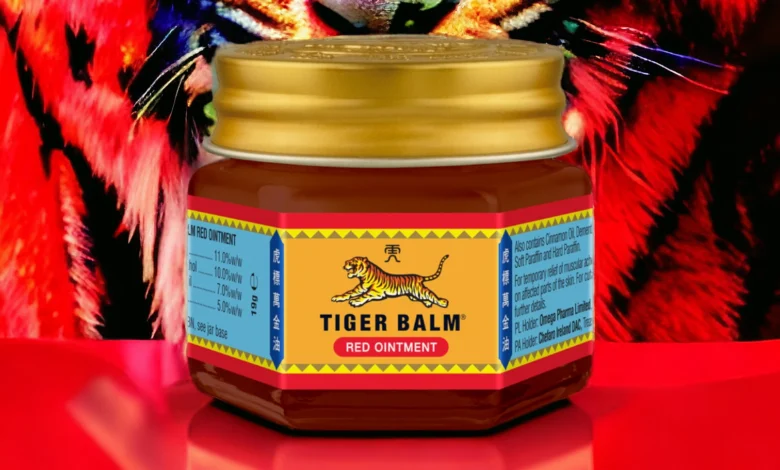Why Is Tiger Balm Illegal: The Untold Truth Behind the Famous Pain Relief Ointment

Introduction: Why Is Tiger Balm Illegal?
You might be surprised to learn that a product as popular and trusted as Tiger Balm — known for its powerful pain-relieving abilities — has faced bans and restrictions in certain countries. So, why is Tiger Balm illegal in some parts of the world? The answer isn’t simple. It’s a fascinating mix of safety concerns, ingredient regulations, and local government policies.
Tiger Balm has been a household name for over a century. Millions swear by it for soothing sore muscles, headaches, joint pain, and even insect bites. But despite its long-standing reputation, some regions have placed restrictions on it due to specific ingredients that clash with their health and safety laws.
In this article, we’ll dig deep into the history, composition, global popularity, and controversy surrounding Tiger Balm — and, of course, uncover why Tiger Balm is illegal in certain countries.
What Is Tiger Balm?
Tiger Balm is a herbal ointment that originated in China during the late 19th century. It was developed by Aw Chu Kin, a Chinese herbalist, and later popularized by his sons Aw Boon Haw and Aw Boon Par, whose names inspired the “Tiger” brand.
The balm quickly became famous for its ability to relieve pain, reduce inflammation, and promote relaxation. It’s available in two main types:
| Type | Color | Common Uses | Strength |
| Tiger Balm Red | Reddish brown | Muscle pain, arthritis, backaches | Strong |
| Tiger Balm White | White | Headaches, nasal congestion, minor aches | Mild |
Both versions are applied topically and give a warm or cooling sensation, depending on the ingredients.
Key Ingredients That Made Tiger Balm Famous
Tiger Balm’s power comes from its natural ingredients, which are blended in precise proportions. Here’s what typically goes inside:
- Camphor: Provides a cooling effect and helps with pain relief.
- Menthol: Soothes itching and acts as a mild anesthetic.
- Cajuput Oil: Helps with inflammation and muscle pain.
- Clove Oil: Has antibacterial and pain-relieving properties.
- Cassia Oil: Gives the balm its warm, spicy aroma.
- Paraffin and Petroleum Jelly: Act as carriers for the active oils.
These ingredients combine to create a balm that offers instant comfort. However, some of these components — especially camphor and menthol — have raised safety concerns in certain countries, leading to questions about why is Tiger Balm illegal in some places.
The Global Popularity of Tiger Balm
Tiger Balm isn’t just another ointment — it’s a global brand. Used by athletes, the elderly, and even office workers, it’s found in homes across Asia, Europe, and North America. Its appeal lies in:
- Natural ingredients: It’s plant-based and free from harsh chemicals.
- Fast results: Users often report quick relief from pain and tension.
- Cultural heritage: It’s seen as a trusted remedy with roots in traditional Chinese medicine.
Despite its fame, Tiger Balm’s journey hasn’t always been smooth. Some governments have taken issue with certain ingredients, bringing us to the big question: why is Tiger Balm illegal in some countries?
Why Is Tiger Balm Illegal in Certain Countries?
The legality of Tiger Balm depends largely on local health regulations and ingredient safety laws. While most countries allow its sale, a few have placed restrictions or outright bans due to concerns about its chemical composition, labeling, or potential side effects.
Here’s a closer look at the main reasons:
1. Camphor Content
Camphor, one of the main ingredients, can be toxic if ingested in large amounts.
- In the United States, products containing more than 11% camphor are restricted.
- Some versions of Tiger Balm exceed this level, making them illegal to import or sell without special approval.
2. Unapproved Medicinal Claims
In countries like Canada and Australia, Tiger Balm has faced scrutiny because the manufacturer made medical claims without proper certification from local drug authorities.
3. Labeling and Import Issues
Some nations require all topical medicines to carry specific warnings and ingredient lists. Tiger Balm’s traditional packaging sometimes fails to meet these requirements, resulting in import bans.
4. Health Safety Concerns
Certain versions of the balm sold in Asia once contained natural camphor and essential oils that varied in concentration. This inconsistency led regulators to ban products that didn’t meet safety standards.
5. Local Regulations and Herbal Restrictions
Countries like Nepal, Bhutan, and parts of Europe restrict the sale of products that contain specific essential oils or herbal compounds. Tiger Balm sometimes falls into this category, leading to partial bans.
Examples of Countries Where Tiger Balm Is Restricted or Illegal
| Country | Reason for Restriction | Type of Ban |
| United States (Certain States) | Camphor content exceeds 11% limit | Partial |
| Canada | Unapproved medicinal claims | Partial |
| Nepal | Ingredient restrictions under local herbal law | Full |
| Bhutan | Import ban on foreign medicated ointments | Full |
| Australia | Labeling and therapeutic goods regulations | Partial |
| European Union (some areas) | Camphor safety regulations | Partial |
These restrictions don’t mean Tiger Balm is dangerous for everyone — they simply show how different countries interpret safety standards differently.
The Misunderstanding: Is Tiger Balm Really Unsafe?
Not necessarily. The key issue isn’t that Tiger Balm is harmful — it’s about how it’s used. When used as directed, Tiger Balm is perfectly safe for most people. Problems arise when it’s ingested, over-applied, or used on open wounds.
In fact:
- Camphor can be toxic if swallowed, especially by children.
- Menthol may cause mild skin irritation in sensitive individuals.
- Some people may experience allergic reactions to essential oils.
When users follow proper directions — applying only a small amount to affected areas — side effects are rare.
So, while why is Tiger Balm illegal might sound alarming, in most cases, it’s simply due to overcautious regulations rather than actual health threats.
Legal Alternatives to Tiger Balm
If Tiger Balm is restricted in your country, don’t worry — there are many legal and effective alternatives that provide similar benefits.
Here are some examples:
| Alternative | Key Ingredients | Benefits |
| Vicks VapoRub | Menthol, camphor, eucalyptus oil | Cough relief, muscle pain relief |
| Deep Heat Cream | Methyl salicylate, menthol | Muscle relaxation, pain relief |
| Icy Hot | Menthol, camphor | Cooling-warming pain relief |
| Biofreeze | Menthol | Targeted pain relief for muscles and joints |
These products are widely available and approved by local health authorities, making them safe alternatives if you can’t access Tiger Balm legally.
The Cultural and Emotional Value of Tiger Balm
For many, Tiger Balm isn’t just medicine — it’s a part of their family tradition. Generations have relied on it for everyday aches and pains. Its distinctive scent and familiar packaging carry nostalgia and comfort.
In Asian cultures, it’s often seen as a symbol of care, something passed down from parents to children. That emotional bond explains why the question, “why is Tiger Balm illegal?”, sparks strong reactions among its loyal users.
The Company’s Efforts to Meet Regulations
The makers of Tiger Balm, Haw Par Corporation, have continuously worked to adapt to modern standards. Over the years, they’ve:
- Reduced camphor levels in some formulations
- Updated labeling to meet international guidelines
- Registered Tiger Balm as an over-the-counter medicine in multiple countries
These efforts show that the company values both consumer safety and global trust, striving to make Tiger Balm compliant while keeping its classic effectiveness.
Expert Opinions on Tiger Balm
Medical professionals and herbal experts generally agree that Tiger Balm is safe when used properly. According to health practitioners:
- The balm offers real relief for muscle tension and headaches.
- Most issues arise from misuse or overuse.
- Regulatory bans are often based on preventive caution, not proven danger.
Experts recommend checking local ingredient limits before purchasing imported versions. It’s always best to buy from trusted pharmacies or authorized retailers to ensure product authenticity.
Conclusion: Understanding Why Is Tiger Balm Illegal
In the end, the question — why is Tiger Balm illegal — doesn’t have a single answer. It’s a mix of ingredient restrictions, labeling laws, and regulatory caution. The balm itself isn’t inherently dangerous; it’s simply misunderstood or misclassified under certain health policies.
Despite occasional bans, Tiger Balm remains a beloved remedy worldwide, trusted for its natural healing and cultural heritage. As long as it’s used responsibly and purchased from legal sources, there’s no reason to fear this timeless herbal product.
So, the next time you hear someone ask, “why is Tiger Balm illegal?”, you’ll know the truth: it’s not about danger — it’s about regulation. And for millions of people, Tiger Balm continues to stand as a safe, soothing, and iconic symbol of natural relief.
You may also read
Free Chair Yoga Exercises: The Ultimate Guide to Gentle Fitness and Flexibility





